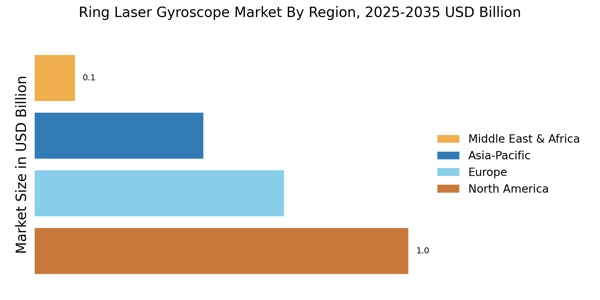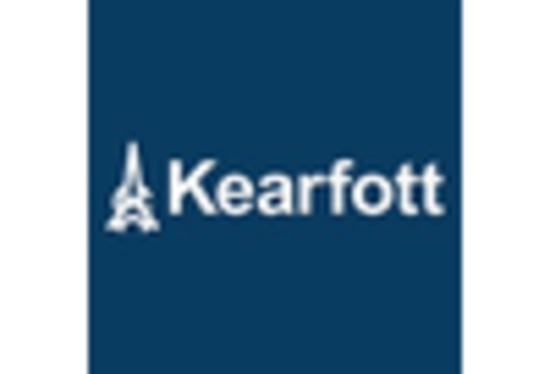Miniaturization Trends in Electronics
The Ring Laser Gyroscope Market is also benefiting from the ongoing miniaturization trends in electronics. As devices become smaller and more compact, the demand for lightweight and efficient gyroscopes is increasing. This trend is particularly evident in consumer electronics, where the integration of ring laser gyroscopes into smartphones and wearable devices is becoming more common. The ability to provide accurate motion sensing in a compact form factor is driving innovation in the market. It is estimated that the miniaturization of gyroscopes could lead to a market growth of around 10% in the next few years. This shift not only enhances the functionality of consumer devices but also opens new avenues for the application of ring laser gyroscopes in various industries.
Growing Demand in Aerospace and Defense
The Ring Laser Gyroscope Market is significantly influenced by the growing demand in the aerospace and defense sectors. These gyroscopes are critical components in inertial navigation systems, which are essential for aircraft and missile guidance. The increasing investments in defense technologies and the modernization of military equipment are propelling the demand for high-precision navigation solutions. According to recent estimates, the aerospace and defense segment accounts for nearly 60% of the total market share in the ring laser gyroscope industry. This trend is expected to continue as nations prioritize enhancing their defense capabilities. Additionally, the rise in commercial aviation and the need for advanced navigation systems in civil aircraft further contribute to the market's expansion.
Rising Applications in Robotics and Automation
The Ring Laser Gyroscope Market is experiencing a rise in applications within the robotics and automation sectors. As industries increasingly adopt automation technologies, the need for precise navigation and orientation systems becomes critical. Ring laser gyroscopes provide the necessary accuracy for robotic systems, enabling them to perform complex tasks with high reliability. The market for these gyroscopes in robotics is projected to grow at a CAGR of around 9% in the coming years. This growth is driven by the expanding use of robots in manufacturing, logistics, and even healthcare. The ability of ring laser gyroscopes to enhance the performance of autonomous systems is likely to propel their adoption across various industries, further solidifying their role in the evolving landscape of automation.
Increased Investment in Research and Development
The Ring Laser Gyroscope Market is witnessing increased investment in research and development, which is fostering innovation and enhancing product offerings. Companies are focusing on developing next-generation gyroscopes that offer improved accuracy, reduced power consumption, and enhanced durability. This trend is particularly relevant in sectors such as aerospace, automotive, and robotics, where precision is paramount. The investment in R&D is expected to lead to the introduction of advanced ring laser gyroscopes that can operate in extreme conditions, thereby expanding their applicability. Analysts predict that this focus on innovation could result in a market growth rate of approximately 7% over the next five years, as new technologies emerge and existing products are refined.
Technological Advancements in Navigation Systems
The Ring Laser Gyroscope Market is experiencing a surge in demand due to rapid technological advancements in navigation systems. These gyroscopes offer superior precision and reliability compared to traditional inertial measurement units. As industries increasingly adopt advanced navigation technologies, the market for ring laser gyroscopes is projected to grow significantly. For instance, the integration of these gyroscopes in autonomous vehicles and drones enhances their navigational capabilities, thereby expanding their application scope. The market is expected to witness a compound annual growth rate (CAGR) of approximately 8% over the next five years, driven by these innovations. Furthermore, advancements in laser technology are likely to improve the performance and reduce the costs associated with ring laser gyroscopes, making them more accessible to various sectors.

















Leave a Comment